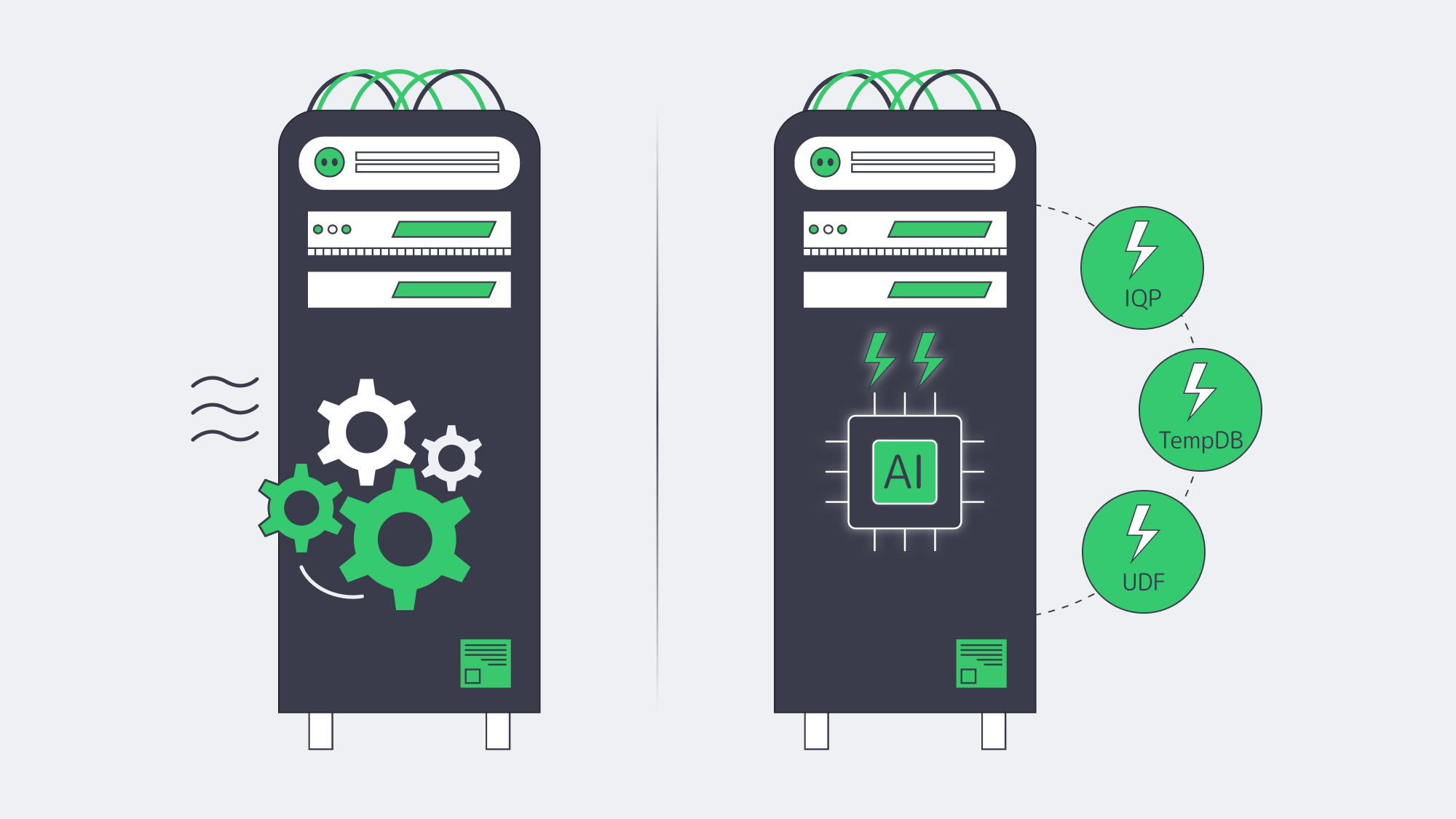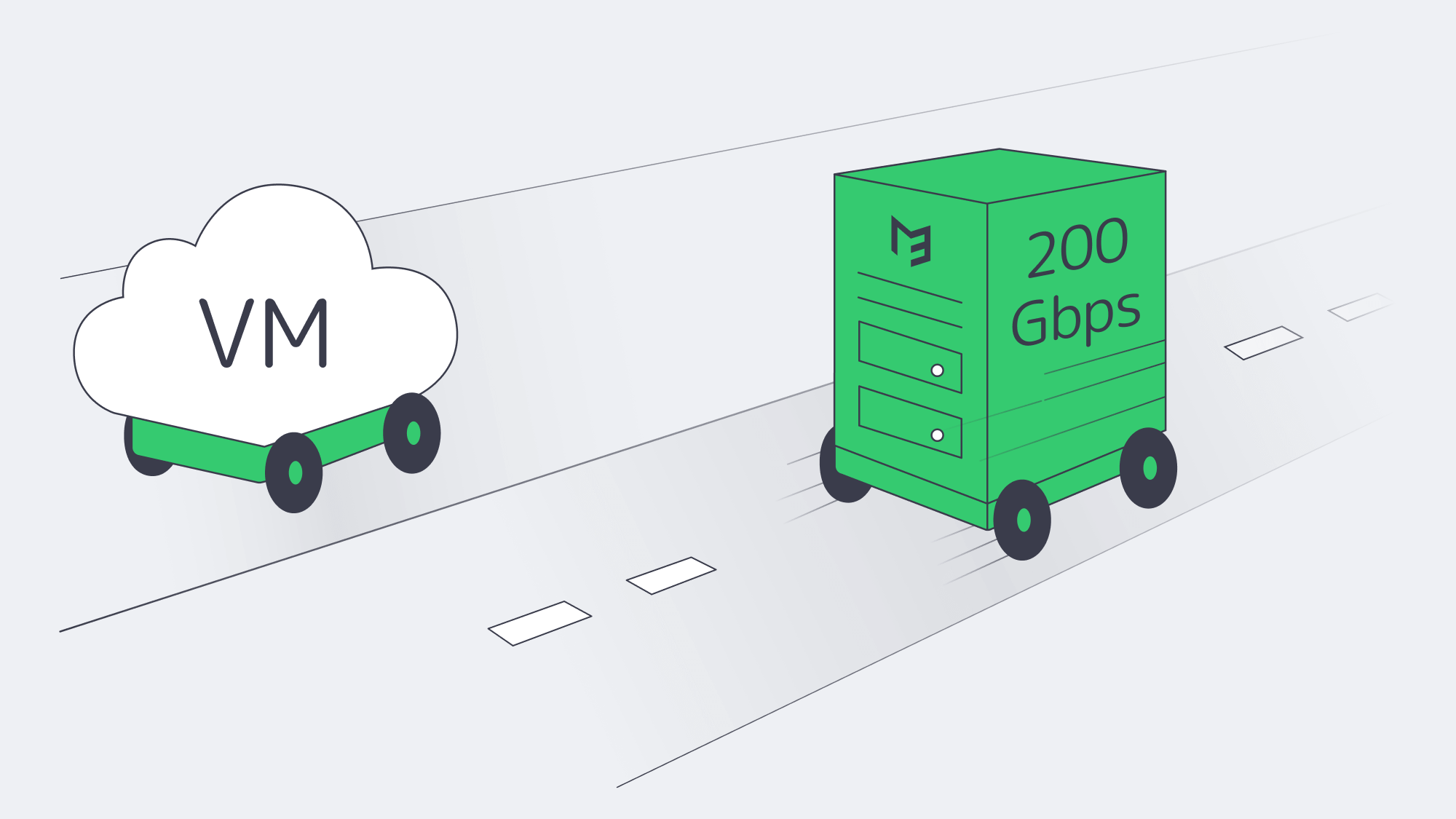Blog

Upgrade to SQL Server 2022 for Peak Performance and Predictable Cost
A production database is one of the fastest aging technologies. However, a survey of thousands of instances under observation reveals that over 30 % of SQL Server implementations are currently running on a release that is already out of extended support, or within 18 months of being out of it. In the meantime, data-hungry applications are demanding millisecond latency and linear scalability—something the older engines were never designed to handle.
The fastest route to both resilience and raw speed is an in-place upgrade to SQL Server 2022. It builds on all the progress in 2019 and adds a second wave of Intelligent Query Processing, latch-free TempDB metadata, and fully inlined scalar UDFs. Before you write your first line of T-SQL, a lot of workloads will perform significantly faster, typically 20-40 % in Microsoft benchmarks, and sometimes by much more than 10 × when TempDB or UDF contention was the underlying problem.
Equally essential, the 2022 release sets the support clock well into the 2030s, so there is no longer the yearly scramble (and cost burden) to keep up with Extended Security Updates. Under a modern license, you have complete certainty about the database’s cost, regardless of how high transaction volumes increase; a type of predictability that is becoming increasingly valuable.
Why Move Now? Support Deadlines and Predictable Costs
SQL Server 2012, 2014, and 2016 either ran out of extended support or are heading to the door in a sprint. Security fixes now require ESUs that begin at 75 % of the original license price in year 1 and increase to 125 % by year 3.[1] Paying such ransom keeps the lights on but can purchase zero performance headroom.
The same is reflected in market data: ConstantCare telemetry data collected by Brent Ozar shows that 2019 already has a 44 % share, with 2022 already surpassing 20 % and being the fastest-growing release.[2] Enterprises are not only jumping on board to keep up with patching, but to get the performance that their peers are already experiencing.
Support Clock at a Glance
| Release | Mainstream End | Extended End |
|---|---|---|
| 2012 | Jul 2017 | Jul 2022 |
| 2014 | Jul 2019 | Jul 2024 |
| 2016 | Jul 2021 | Jul 2026 |
| 2019 | Jan 2025 | Jan 2030 |
| 2022 | Nov 2027 | Nov 2032 |
Table 1. ESUs available at escalating cost through 2025.
The pattern is evident: roughly every three to five years, the floor just falls out under an older release. You are already beyond the safety net regarding 2012 or 2014. People on 2016 only have a year’s worth of fixes left, not even a full QA cycle. Many multi-year migration programs will not complete before SQL Server 2019 loses its mainstream status. Leaping directly to 2022, the runway is extended by a decade, which leaves engineering capacity to complete its features and optimize performance, rather than emergency patch sprints.
How Does SQL Server 2022 Improve Performance on Day One?

Intelligent Query Processing 2.0
The 2022 release adds Parameter Sensitive Plan optimization and iterative memory grant feedback. The optimizer is allowed to hold multiple plans for the same query and to perfect memory reservations in the long term. Microsoft developers cite 2-5 × speedups on OLTP, including skewed data distributions, without a code change beyond a compatibility level.
Memory-Optimised TempDB Metadata
The TempDB latch waits used to throttle highly concurrent workloads. Microsoft migrated key system tables to latch-free and memory-optimized designs in 2019, and the feature has been enhanced further in 2022. The final bottleneck of the ETL pipelines and nightly index rebuild can be eliminated with one ALTER SERVER CONFIGURATION command.
Accelerated Scalar UDFs
SQL Server 2022 converts scalar UDFs to relational expressions within the primary plan, resulting in orders of magnitude CPU savings where UDFs previously ruled. Add table-variable deferred compilation and rowstore batch mode, and faster backup/restore, and most workloads get measurable gains without code changes.
Putting the Numbers in Context
The in-house TPC E run of SQL Server 2022 on 64 vCPUs achieved 7,800 tpsE, a 19 % increase over the 6,500 tpsE result achieved by SQL Server 2019 on the same hardware. The 95th percentile latency and CPU utilization also decreased by 82 % to 67 %.
Licensing Choices—Core or CAL, Standard or Enterprise
Licensing is what moves TCO, rather than hardware; hence choose wisely.
| Model | When It Makes Sense | 2022 List Price |
|---|---|---|
| Per Core (Std/Ent) | Internet-facing or > 60 named users; predictable cost per vCPU | Std $ 3,945 / 2 cores Ent $ 15,123 / 2 cores |
| Server + CAL (Std) | ≤ 30 users or devices; controlled internal workloads | $ 989 per server + $ 230 per user/device |
| Subscription (Azure Arc) |
Short-term projects, OpEx accounting, auto-upgrades | Std $ 73 / core-mo Ent $ 274 / core-mo |
Table 2. Open No-Level US pricing — check regional programs.
Example: 100 User Internal ERP
- Server + CAL: $989 + (100 × $230 ) ≈ $24 k
- Per-Core Standard: 4 × 2-core packs × $3,945 ≈ $15.8 k
- Per-Core Enterprise: 4 × 2-core packs × $15,123 ≈ $60.5 k
CAL licensing is 50 % more expensive than per core Standard at 100 users.
Standard or Enterprise?
Standard limits the buffer pool to 128 GB and parallelism to 24 cores, but has the entire IQP stack sufficient for the majority of departmental OLTP.
With all physical cores licensed, Enterprise eliminates hardware limits, enables online indexing operations, multi-replica Availability Groups, data compression, and unrestricted VM permissions. Enterprise pays off when you require more than 128 GB of RAM or multi-database failover.
How Do Dedicated Servers Multiply SQL Server 2022 Gains?

No matter how smart the optimizer is, it cannot outrun a slow disk or a clogged network. SQL Server 2022 on dedicated hardware prevents these noisy neighbour effects that are typical of multi-tenant cloud options and takes advantage of the engine memory bandwidth appetite.
Melbicom delivers servers with up to 200 Gbps of guaranteed throughput and NVMe storage arrays optimized to microsecond I/O. With 21 data centers spread throughout Europe, the Americas, and Asia, databases can be located within a few milliseconds of the user base. Over 1,300 server configurations are deployed within two-hour windows; scale-outs no longer wait months to be procured.
Compliance also increases. Financial regulators are increasingly singling out shared hosting as a site of sensitive workloads. Running SQL Server on bare metal makes audits easy: there are only your applications on the box and you are in control of the encryption keys.
Choose Melbicom— 1,300+ ready-to-go servers — 21 global Tier IV & III data centers — 55+ PoP CDN across 6 continents |
 |
How to Upgrade to SQL Server 2022: Implementation Checklist
- Take care of licensing ahead of time. Check audit cores and user counts; then make a decision on whether to reuse licenses with SA or purchase new packs.
- Before and After Benchmark. Take before-and-after wait statistics on the current instance, including the upgrade counts.
- Roll out new features over time. Flip compatibility to 160 in QA, monitor Query Store, and repeat in production
- Enable memory-optimized TempDB metadata. Validate latch waits go away.
- Review hardware headroom. Even when DB-level features are no longer sufficient to fill up the CPU, scaling up clocks or core counts is no problem with dedicated gear.
Automated tooling is beneficial. Query Store retains the plans before the upgrade, and you can override to an old plan in case a regression is observed. Distributed Replay or Workload Tools may be used to record production traffic and replay it onto a test clone, revealing surprises well before go-live. Finally, maintain a rollback strategy: once a database connects to 2022, the engine cannot be rolled back, so only perform a compressed copy-only backup before migrating. Storage is cheap, but downtime is not.
Ready to Modernize Your Data Platform?

SQL Server 2022 reduces latency, minimizes CPU usage, and pushes the next support deadline almost a decade into the future, providing finance with a fixed-cost model. The technical work is done by most teams within weeks, followed by years of operational breathing space.
Get Your Dedicated Server Today
Deploy SQL Server 2022 on high-spec hardware with up to 200 Gbps bandwidth in just a few hours.